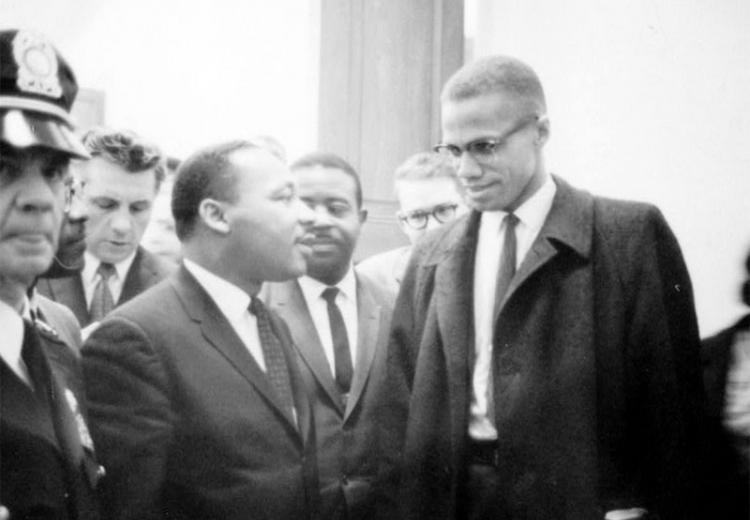Lesson 2: Black Separatism or the Beloved Community? Malcolm X and Martin Luther King, Jr.

Martin Luther King and Malcolm X waiting for press conference, March 26, 1964.
Library of Congress
"You don't integrate with a sinking ship." This was Malcolm X's curt explanation of why he did not favor integration of blacks with whites in the United States. As the one-time chief spokesman of the Nation of Islam, a Black Muslim organization led by Elijah Muhammad, Malcolm X argued that America was too racist in its institutions and people to offer hope to blacks. The solution proposed by the Nation of Islam was a separate nation for blacks to develop themselves apart from what they considered to be a corrupt white nation destined for divine destruction.
In contrast with Malcolm X's black separatism, Martin Luther King, Jr. offered what he considered "the more excellent way of love and nonviolent protest" as a means of building an integrated community of blacks and whites in America. He rejected what he called "the hatred and despair of the black nationalist," believing that the fate of black Americans was "tied up with America's destiny." Despite the enslavement and segregation of blacks throughout American history, King had faith that "the sacred heritage of our nation and the eternal will of God" could reform white America through the nonviolent Civil Rights Movement.
This lesson will contrast the respective aims and means of Malcolm X and Martin Luther King, Jr. to evaluate how best to achieve black American progress in the 1960s.
Guiding Questions
Is the separate black nation proposed by Malcolm X a better or nobler goal than "the beloved community" of Martin Luther King, Jr.?
Which approach toward equity is more sustainable?
Learning Objectives
Evaluate the merits and shortcomings of the competing philosophies around achieving civil rights.
Examine the relationship between each leader's background and their approach to achieving civil rights.
Analyze the public response to the means by which each leader sought to achieve their goals.
Evaluate the short and long term impact of these men and their philosophies regarding violence as a means toward change.
